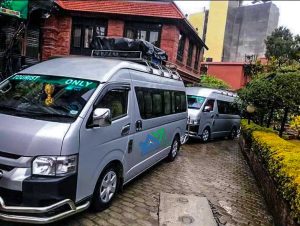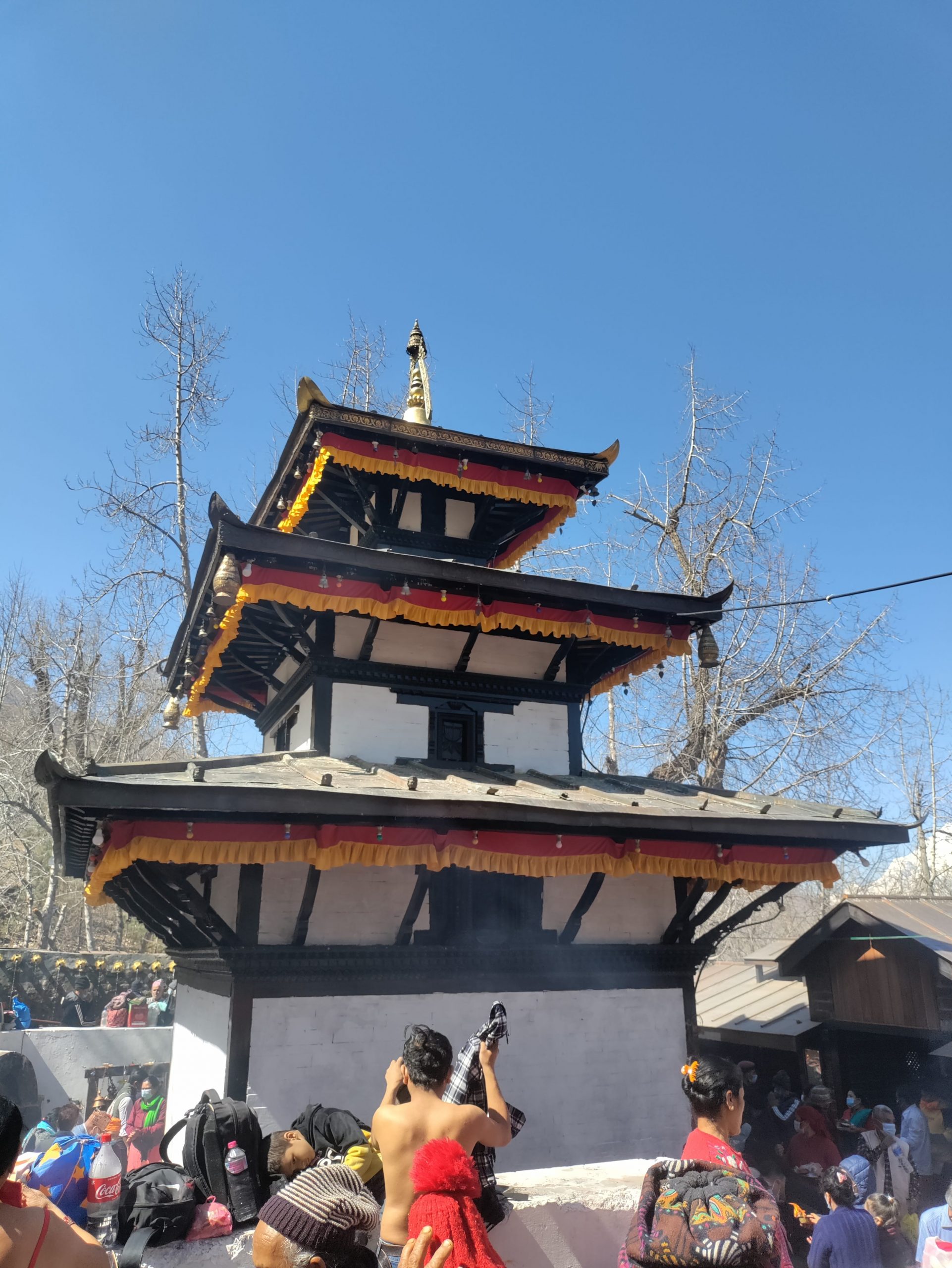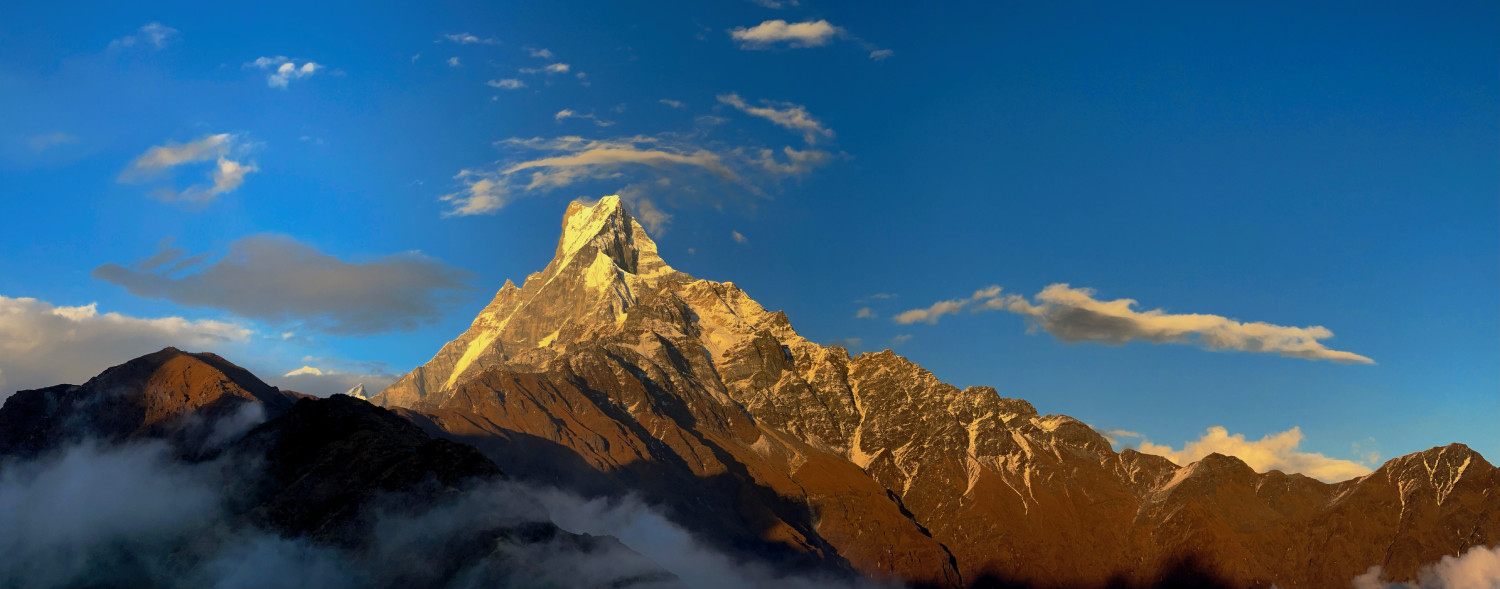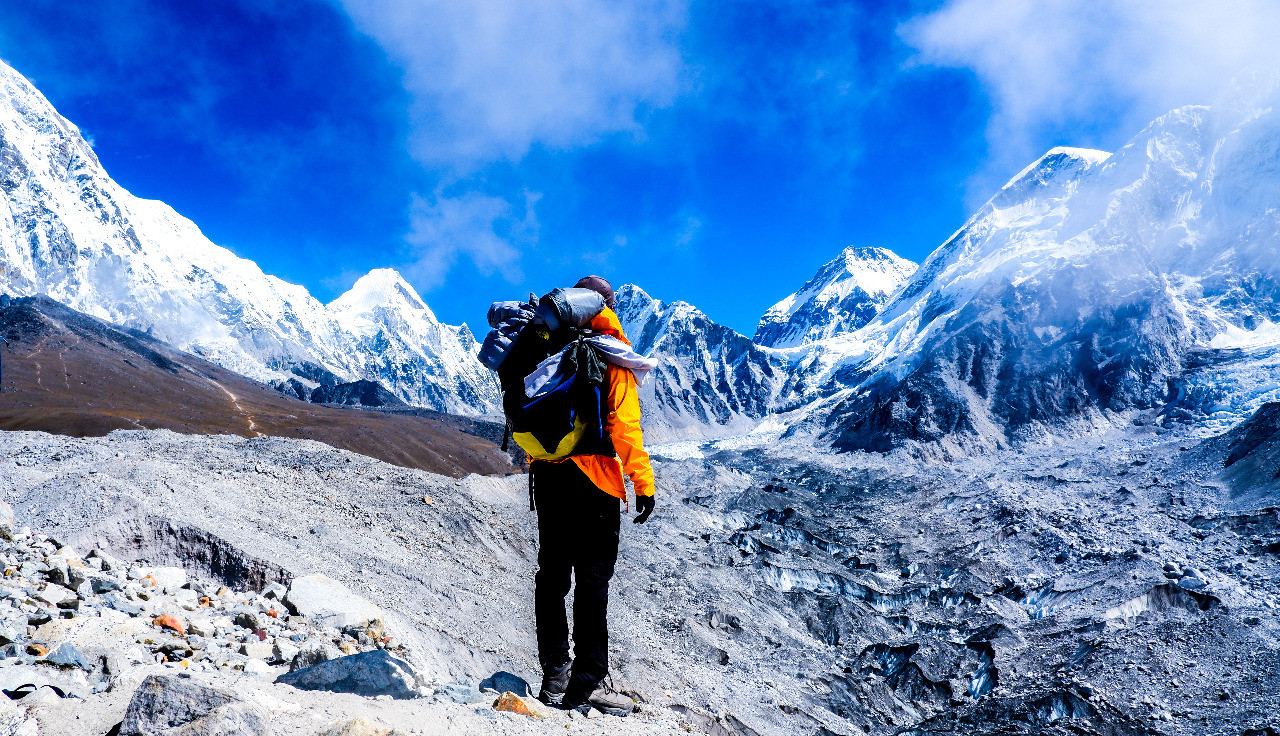Mount Everest – perhaps the only mountain known by everyone, sporty or nerdy, adventurous or prudent. Being the highest mountain above sea level on Earth, many mountaineers mark conquering the 8,848m on their bucket list, with some managed to make it, some sadly gave their lives away. The risk involved is a setback for most people who wish to enjoy the picturesque Everest scenery. But now, there is a moderate alternative for common folks – The Everest Base Camp Trek. Continue reading “Everest Base Camp Trek Facts and Information”
How to rent or book Hiace Van in Nepal?
Nepal is Popular touristic destination for Nature and culture exploration. Trekking and cultural sightseeing tour are very popular with international tourist after Mountain Expedition. Travelers need various kinds of vehicles as per their comfort. When booking trekking packages in Nepal with agency you will not need to worry for booking extra vehicle yourself. But if you are customizing your trip your self to explore Nepal in your own way then you need to book a vehicle yourself.
There are various trekking companies and vehicle companies which will allow you to book a vehicle as per your need. Before booking vehicle you need yo know which vehicle is required for your destination and cost. The cost of vehicle rental or hiring is comparatively higher in Nepal due to many reasons.
This blog aims to provide complete information about Hiace rental service in Nepal.
What is Hi-ace?
The HiAce (pronounced as “High Ace”) is a light commercial van produced by the Japanese automobile manufacturer Toyota. The max capacity of this van is 15 pax including driver. Currently there are two types of Hi-ace are available in Nepal. One is Toyata HiAce and another is Nissan HiAce. HiAce is categorized as luxurious vehicle for group who want to travel in asphalt roads.
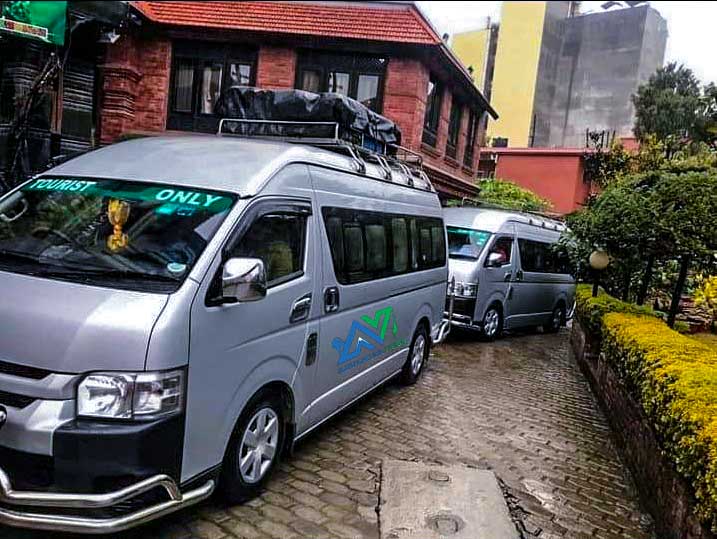
Where can I travel in Hi-ace?
You can travel all around Nepal where the roads are asphalt or is in very good condition. If you are planning to travel in off roads I suggest you to choose 4W vehicles like Scorpio and sumo.
How to book hiace in Nepal?
If you are already in Nepal and want to book or rent hi-ace visit nearest travel agency or transport company. They can arrange vehicle for you. If you are not in Nepal or do not want to visit agents you can directly contact vehicle owner by clicking here book HiAce in Nepal.
Is it good to contact vehicle owner or vehicle agents for renting vehicles in Nepal?
If you do not know any vehicle owner you have no choice so you must contact vehicle rental agents. They will provide you vehicle on commission basis. But if you know vehicles owners they can provide you the cheaper rates than agents.
Adventure vision treks is vehicle rental agency or owner company?
Adventure vision treks and travels owns its own vehicle and provides rental facility through online as well through various rental agencies in Kathmandu Nepal. As we are trekking and tour company with own vehicles. we also have B2B contracts with others owners so we can provide vehicle hiring and booking in Nepal at cheaper rates than other travel agencies in market. As already I said we have B2B contracts, If our vehicle is not available in specified date then also we can provide other owners vehicles on same rate as our vehicle.
How much should I pay to book or rent vehicle?
For the confirmation of booking we charge 20% of total cost for booking vehicle. The booking charge is 100% refundable (bank payment commission 4% is deducted) if you cancel your trip before 10 days. And 50% is refundable before 1 day.
How to confirm vehicle booking?
First send us inquiry about your pick up and drop off location, we will provide you the rate of vehicle booking or rental on your date. Then you should go to our payment processing page by clicking here or link provided on email. Then you will get confirmation email of booking.
How to cancel or change the date of my booking?
Just send us one email. All thing is done. We will process your request as soon as we receive your email. The refund process can be held up to 48 hours by bank (not by us).
I am traveling with another trekking agency, can I book vehicle with you?
Yes, off course you can book vehicle in Nepal with us, traveling agency does not matter for that.
You will provide driver with rental vehicle?
Yes, all the cost provided by us are included with driver charge.
Can I book only vehicle not driver?
Yes, you can book but some terms and conditions should be fulfilled before taking vehicles from us. You must provide proof of valid driving license which is valid in Nepal. You must keep **some security deposit which will be refunded when you return our vehicles.
Which vehicle is perfect for what kind of group?
If you want single vehicle for group we suggest following. But if you prefer more than 1 vehicle , you can book or rent any vehicle.
| Range | Vehicle Type |
|---|---|
| 1 – 4 | Car |
| 3 – 7 | Scorpio |
| 5 – 14 | Hiace |
| 14+ | Bus |
Photos of Hiace
Renting a Hiace is a great way to explore everything that Nepal has to offer. Whether you’re trekking through the mountains or sightseeing in the cities, having your own vehicle will give you the freedom to go wherever you want, whenever you want.
So if you’re planning a trip to Nepal, consider renting a Hiace. It’s the perfect way to make the most of your adventure in this beautiful country.
Tags: hiace booking in Nepal, hiace rental in Nepal, Hire a hiace in Nepal, vehicle booking in nepal, vehicle rental in nepalMuktinath Tour – How to reach Muktinath Temple?
Are you planning for Muktinath Darshan Yatra? This article can lead you to book and plan Muktinath dham yatra at lower cost.
Muktinath is located in Mustang district of Nepal. Which is called as the district behind the Himalayas. As you have to pass Himalayan range including Mt Dhaulagiri and Mt Annapurna range via Kaligandaki gorge to reach Muktinath. There is another option via Manang passing Thorongla pass. Next option is you need to enter through China side via Upper mustang which is not easy and you need special permit.
Muktinath temple is considered as the most beautiful place in Nepal. The Muktinath Temple tour is one of the best ways to begin and see Nepal’s natural beauty and cultural tradition. At the base of the majestic Annapurna range, Muktinath is situated in the Annapurna region, which is the most popular tourism destination for both local and foreign travelers. In the Annapurna region, Muktinath, a sacred shrine dedicated to Lord Vishnu, is a popular destination for pilgrims. Muktinath Temple can be reached via trekking, road, Heli and Aeroplane. You can choose any kind option according to your comfort zone. Continue reading “Muktinath Tour – How to reach Muktinath Temple?”
Annapurna Base Camp Trek Cost
Annapurna Base Camp is situated at an elevation of 4,130 meters (13,549 feet) above sea level on the northern side of Nepal, within the Annapurna region. Renowned among trekkers worldwide, it boasts a landscape cherished for its tranquility and offers breathtaking views of the Annapurna ranges. The surrounding hills and rivers further enhance the area’s natural beauty. The region is also home to a diverse array of wildlife, including tigers, snow leopards, oxen, and various species of deer, which add to its allure. Trekking in this area provides a unique opportunity to immerse oneself in the local culture of the Gurung and Magar people, who are the indigenous residents. Their warm hospitality and reverence for guests, embodied in the saying ‘Atithi Devo Bhava,’ meaning ‘the guest is God,’ ensure a memorable experience for visitors.”
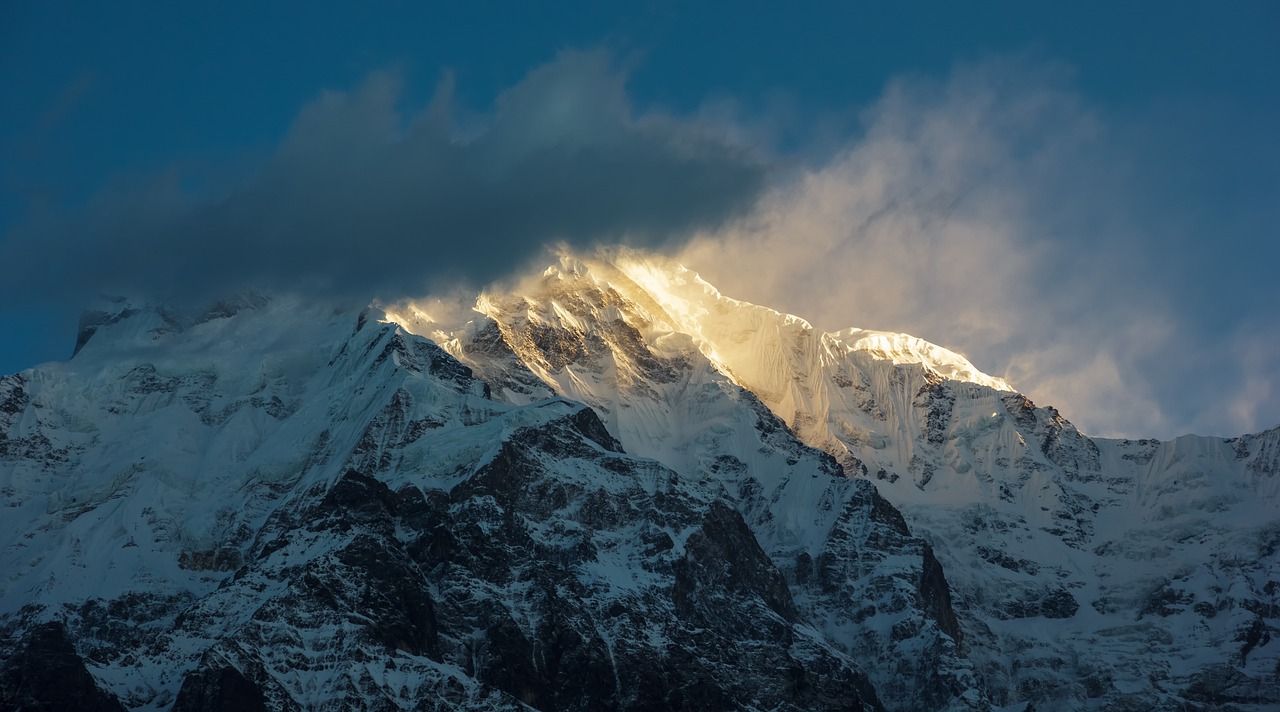
After learning about the wonders of the Annapurna region, you might be considering trekking here. When planning your trip, one of the first steps is researching the costs associated with the trek to ensure it aligns with your budget. Don’t fret; we’re here to guide you through the budgeting process and explain the various expenses you’ll encounter in Annapurna. From permits to accommodation and meals, there are several factors to consider when budgeting for your trek.
Transportation Cost
When planning a trek in the Annapurna region, one of the primary considerations is how to reach the area. Nepal has two international airports, with Tribhuvan International Airport being the preferred choice for most travelers. You can compare flight ticket prices from various online platforms such as Goibibo and MakeMyTrip to find the best deals for your journey to Nepal.
Upon arriving in Nepal, you’ll need to arrange transportation from the airport and book accommodation for your stay. Websites like TripAdvisor offer a wide range of options for booking hotels in Kathmandu, where you can rest after your flight. The following day, head to the bus park in Kathmandu to catch a sumo (shared taxi) to Pokhara. These sumos typically cost between 500 to 700 Nepalese rupees per person and provide a convenient and affordable means of travel. The journey from Kathmandu to Pokhara takes approximately 8 hours, offering picturesque views of the countryside along the way.
Upon arrival in Pokhara, take some time to rest or venture out to explore the enchanting Phewa Lake, especially in the evening when the scenery is particularly captivating. Many visitors enjoy soaking in the tranquil ambiance and observing the vibrant evening atmosphere of Pokhara.
From Pokhara, you can take a shared sumo to Jhinu Danda, which is a 4-hour ride. The fare typically ranges from 400 to 500 Nepali rupees. Your trek to Annapurna Base Camp will begin from Jhinu Danda, where you can embark on a journey through beautiful hills and trekking trails, ultimately enjoying the breathtaking views of the Annapurna range.
Accommodation
Accommodation during the trek is very important as you will need to trek in the Annapurna which is moderate still it takes some time and rest. Starting from Kathmandu you can book the room starting from Nprs.4000. You can book the hotel from the Trip Advisor or directly contacting them through their phone number or by emailing them.
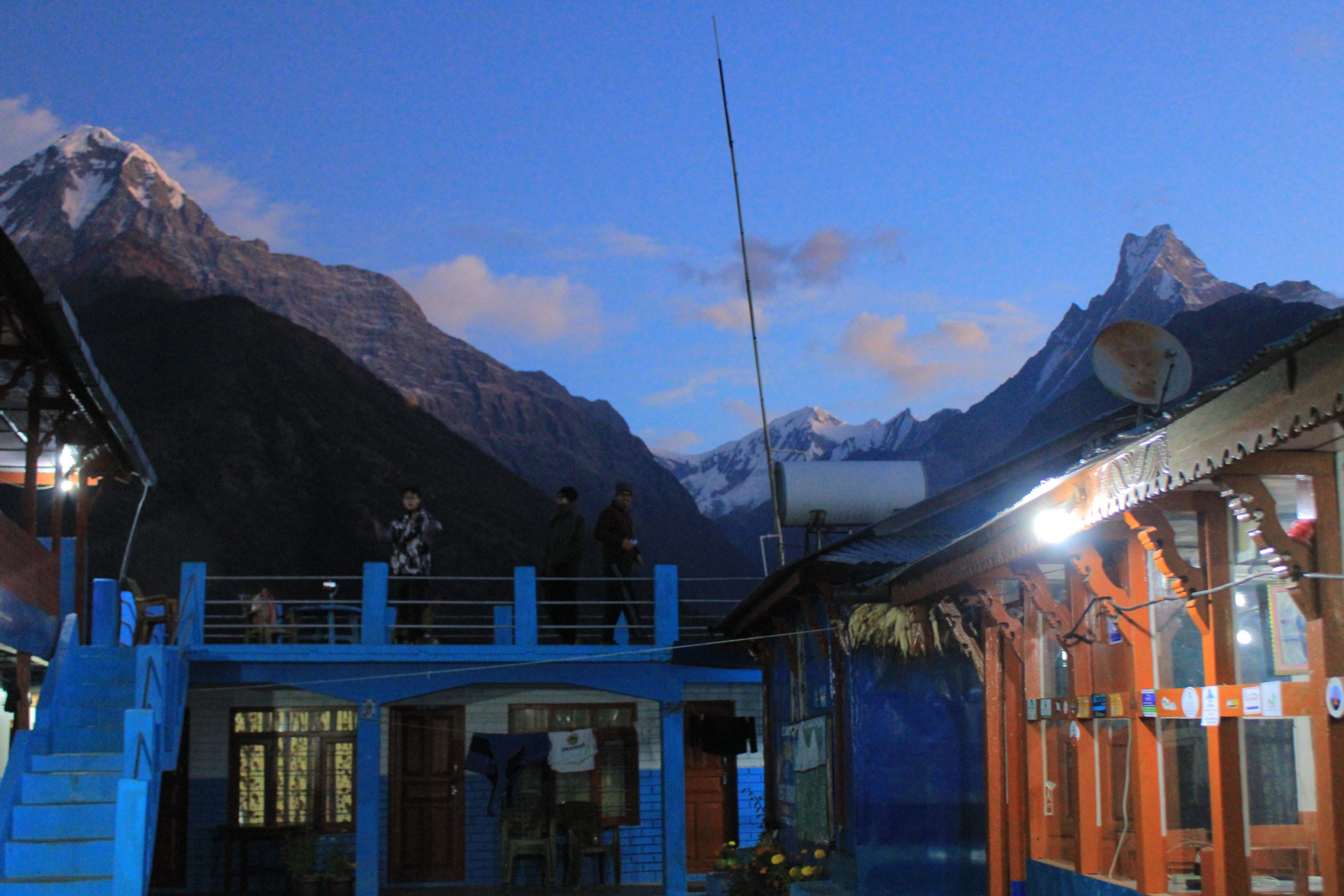
Pokhara and Kathmandu are the places where you will get luxurious rooms at lower prices. But during the trek, it will cost you a little high price as the tea house in the trekking area is situated on a remote site. The one-night price for a tea house in Annapurna can be Nprs. 5000 to 6000. It’s a little expensive right? but it will be value for money as the accommodations are in the base camp so from your room you can see the beautiful views of Annapurna region.
Guides and Porter
When trekking, having a porter is essential, especially as your belongings may be a little heavy. Many trekkers opt to hire a porter so they can focus solely on trekking without worrying about the weight of their belongings. Porters typically charge between $25 to $35 for their services. You can hire a porter at the beginning of the trek, either in Kimche or Nayapul. Upon reaching Kimche, you’ll find numerous porters awaiting guests, making it convenient to hire one for assistance.
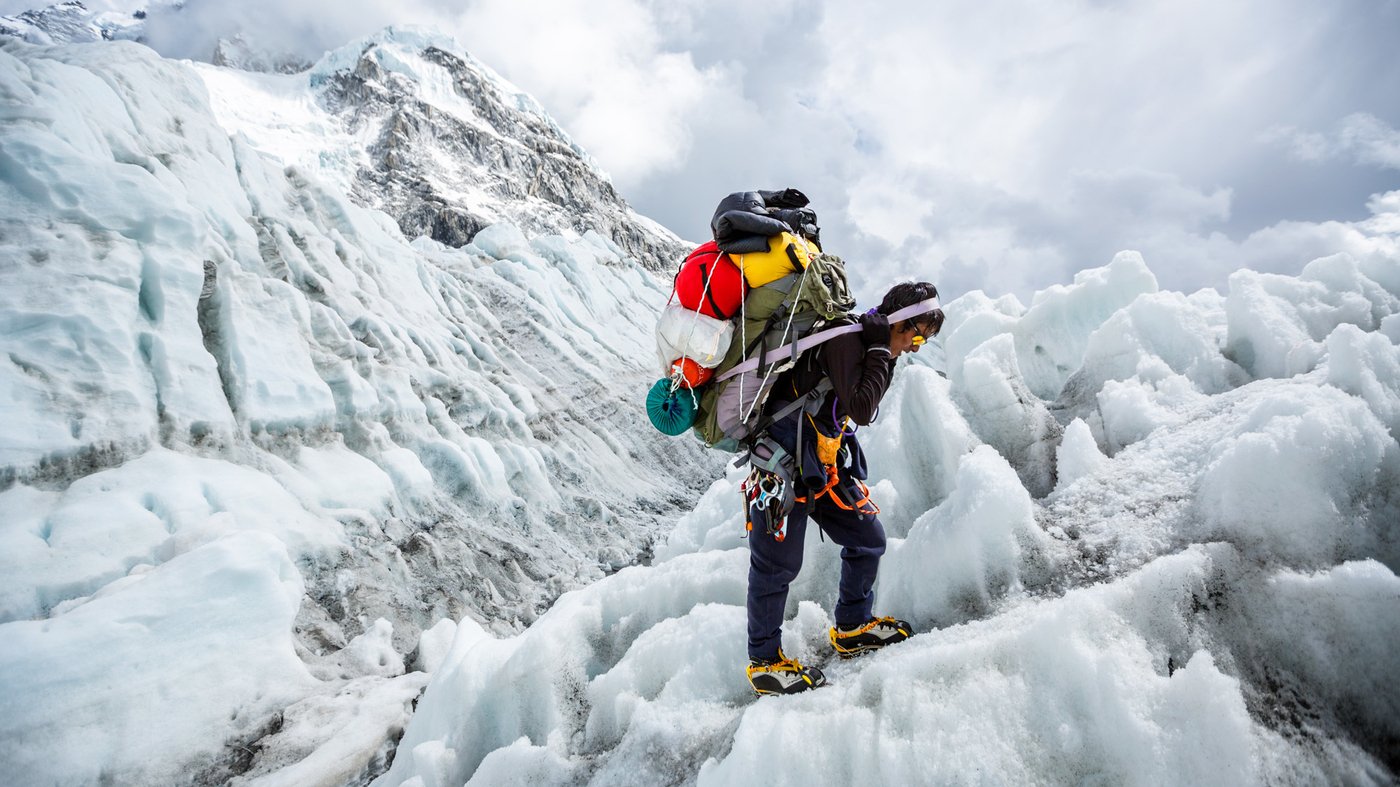
When you trek to Annapurna you will need a guide as well. You can trek alone as well but Google will not show you everything. You will need to explore the place you visit so it’s important to hire a guide cause a local guide knows everything in that region they can help you with everything and they will take you to the place which Google will not suggest. One tip is to always hire a guide who is local in that area so that you can explore everything in Annapurna. A local guide can cost you around 25$ to 35$ per day. You can hire them through many social media channels like Facebook, Instagram.
Permits and fees
Trekking in the Annapurna region requires obtaining trekking permits. There are two permits you must have: the Annapurna Conservation Area Project (ACAP) permit and the Trekker’s Information Management System (TIMS) permit. These permits are mandatory for entry into the protected area of Annapurna. You can obtain them online through the official website of Nepal or in person at offices in Kathmandu or Pokhara. The TIMS card costs $20, while the ACAP permit costs $30.
In total, your trekking fees will amount to approximately 50,000 to 60,000 Nepali rupees, depending on your itinerary and spending preferences. If you prefer not to handle the logistics yourself, our company offers guided tours that include permits, guides, and porters. You can book our Annapurna trekking tours through the following links:
For a 13-day trek: https://www.adventurevisiontreks.com/trip/annapurna-base-camp-trek
For a 7-day trek: https://www.adventurevisiontreks.com/trip/7-days-short-annapurna-base-camp-trek
Feel free to customize your itinerary according to your preferences, and we’ll assist you accordingly.
Unlocking Beauty of Everest Base Camp: Helicopter Tours
Exploring Everest Base Camp: An Overview

Nestled in the majestic Himalayas, Everest Base Camp stands as the ultimate destination for adventure seekers and nature enthusiasts. Situated at an altitude of 17,600 feet, this iconic location offers breathtaking views of the world’s highest peak, Mount Everest. The journey to this renowned destination often begins with a flight from Kathmandu airport to Lukla airport, followed by a trek to the base camp. Alternatively, travelers can opt for a convenient and scenic Everest helicopter tour, providing an unparalleled perspective of the mountainous terrain. From the luxury of the Everest View Hotel to the thrill of a mountain flight, every moment at the base camp is infused with awe-inspiring experiences.
At an elevation that exceeds five kilometers above sea level, travelers experience firsthand the awe-inspiring grandeur of the Himalayas. The mesmerizing landscapes and the tangible sense of achievement upon reaching the base camp make it a remarkable endeavor. Whether embarking on a heli tour or trekking through the rugged trails, the allure of Mount Everest and the surrounding peaks is an unforgettable experience.
The Unrivaled Beauty of Everest Base Camp
Nestled in the lap of the Himalayas, the base camp sits surrounded by towering mountains, lush green hills, and the renowned Khumbu glacier. Travellers have the chance to immerse themselves in the unique Sherpa culture and warm hospitality at local teahouses. The area also boasts breathtaking vistas of the Khumbu Icefall, Gokyo lakes, and the stunning peak of Ama Dablam. Trekking to the base camp offers a rare opportunity to witness the awe-inspiring natural beauty of the Everest region, a once-in-a-lifetime experience standing at the foot of the world’s highest peak, Mt. Everest, soaring above the sea level.
Why Choose a Helicopter Tour?
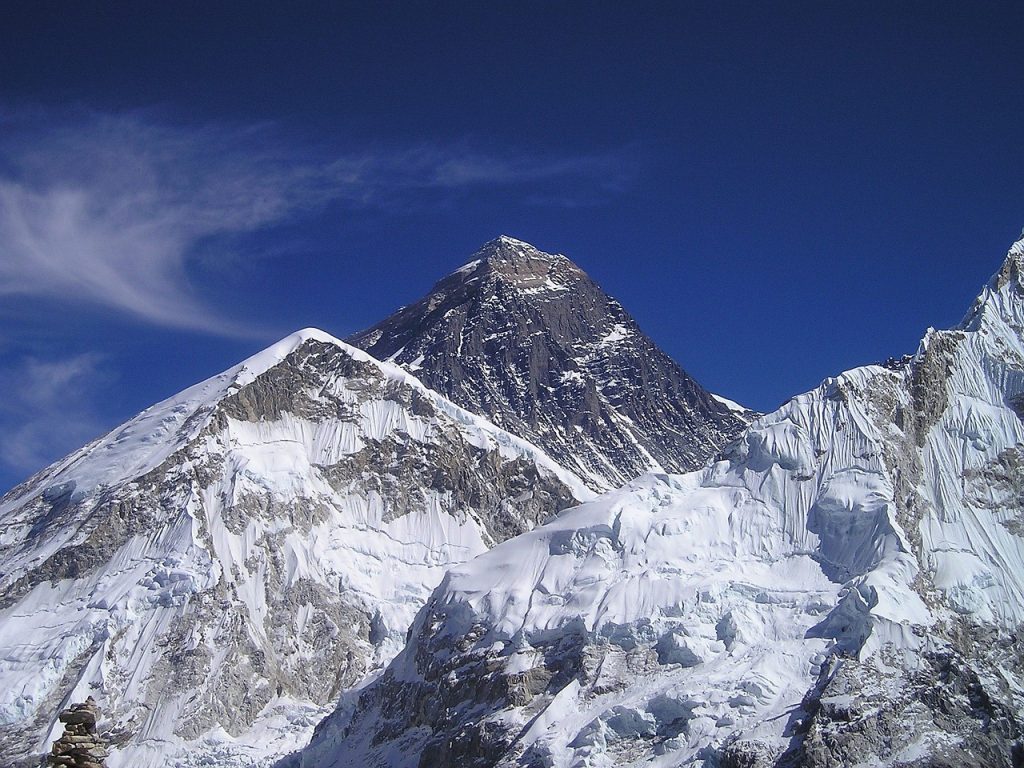
Experience the wonders of Everest Base Camp without the challenges of high-altitude trekking. A helicopter tour offers a safe and time-efficient option for adventurers with limited time. Witness the majestic Mt. Everest and surrounding peaks from a unique perspective, all while enjoying the convenience of a day trip. No physical exertion required!
Decoding the Costs
Understanding the Financial Breakdown
When it comes to Everest Base Camp Helicopter Tours, it’s essential to comprehend the pricing structure. By gaining insights into the costs, you can make an informed decision about your journey to the majestic Mount Everest. From understanding the breakdown of expenses to identifying the factors that influence the overall cost, decoding the financial aspects is crucial for planning a seamless trip.
Evaluating Cost Components
Deciphering the costs involves understanding the different elements that contribute to the overall expense. Factors like the type of helicopter tour, duration of the trip, and inclusions such as transportation from Kathmandu Airport to Lukla Airport, accommodation at Everest View Hotel, and mountain flight experience near Mt. Everest play a significant role in determining the total expenditure. Moreover, considering the altitude of the Mount Everest Base Camp, situated at over 17,000 feet above sea level, and the unique experiences exclusive to the heli tour will give you a comprehensive understanding of the costs involved.
Understanding the Pricing Structure
When selecting a helicopter tour, it’s essential to understand the various factors that influence pricing. Tour rates are typically contingent on group size, weight restrictions, and specific landing times at sites like Lukla Airport or Everest View Hotel. Operators commonly present package options to accommodate diverse service levels and the desired experience, whether it’s a scenic mountain flight or a heli tour landing near Mount Everest Base Camp. In addition to base costs, there may be extra charges for supplemental items, such as oxygen cylinders required for travel at high altitudes, particularly above 12,000 feet (3,658 meters) sea level.
Most tour operators provide multiple payment options, including credit card payments, enhancing payment flexibility for the Everest helicopter tour from Kathmandu airport. It’s vital to consider that private tours may entail distinct pricing structures and inclusions compared to group tours, offering a more personalized experience but potentially at a higher cost.
Factors Influencing the Cost
The cost of helicopter tours is greatly influenced by varying weather conditions and the time of the year. Safety measures and mountain weather conditions play a crucial role in determining the best time for these tours. Additionally, there is a noticeable price variation during the spring season, which happens to be the most popular time for helicopter tours.
Moreover, the cost implications of landing tour options must be considered, especially regarding the time spent at the base camp of Mount Everest. The overall tour cost is also impacted by surrounding peaks, base camp treks, and the unique experiences that these tours offer.
Trip Highlights – Experience the Adventure
Embarking on a journey to the legendary Everest Base Camp presents an array of exhilarating highlights, offering a panoramic feast for the senses. The awe-inspiring aerial view of the Everest region from the vantage point of a helicopter tour is an experience unlike any other. As you soar over the pristine landscape, Mt. Everest, the world’s highest peak, commands attention in all its majestic glory. The journey commences from Kathmandu Airport and leads to the iconic Lukla Airport, well-known as one of the world’s most thrilling landing strips, situated at an elevation of 9,383 feet above sea level. The helicopter tour then navigates through the rugged terrain, unveiling the stunning topography of the Himalayas as it approaches the Everest View Hotel, nestled at an altitude of 12,730 feet, offering an unparalleled glimpse of the awe-inspiring mountain ranges. The adventure culminates with a mountain flight that offers a spellbinding perspective of the Mount Everest Base Camp, enriching the entire experience with a profound sense of grandeur and magnitude.
Major Attractions of the Helicopter Tour
From the helicopter, witness the awe-inspiring view of the earth’s highest peak, Mount Everest. Explore the Khumbu region, the famous Namche Bazaar, and the iconic Everest base camp trek from a vantage point above. Avail the opportunity to partake in the Everest base camp helicopter tour package, complete with ample landing time. Take in the surrounding peaks, the Khumbu glacier, and the exclusive perspective of the Everest view hotel from the helicopter. Opt for the convenience of early morning helicopter flight tours, providing the most spectacular vista of the top of the world.
Unique Experiences to Look Forward to
Embarking on a heli tour offers the exhilarating opportunity to soar over the breathtaking landscapes of the Everest region, witnessing the safe landing and panoramic views of towering mountains and the top of the world. The unique experience of touching down at the base camp of Mount Everest presents an unparalleled adventure, allowing exploration of the surrounding peaks, the Khumbu icefall, and the top of the world from the vantage point of a helicopter. With ready access to this extraordinary encounter, especially for those with limited time, the Everest base camp helicopter tour promises an unforgettable adventure amidst the world’s highest peaks.
Elevating the experience is the seamless journey from Kathmandu airport, traveling towards the heart of the Himalayas, and the unrivaled vantage point provided by the Everest View Hotel. This remarkable adventure culminates in landing at Lukla Airport, the gateway to Everest, where the thrill of experiencing the rugged terrains at an altitude higher than most peaks in the world becomes an indelible memory.
Pre-Decision Considerations for the Tour
Exploring the region’s diverse topography and unique cultural practices, including a visit to the renowned Everest View Hotel for an unparalleled experience. Ensuring a hassle-free journey by choosing a reliable tour operator with a record of safe and successful trips to the Everest Base Camp. Evaluating the convenience and accessibility of the trip, given its departure from Kathmandu Airport and landing at Lukla Airport, positioning travelers closer to the majestic Mt. Everest. Considering altitude-related factors, including the heli-tour’s maximum elevation near the mountain, to ensure the well-being and comfort of all participants. Highlighting the advantages of a helicopter tour in providing breathtaking aerial views that surpass those of a mountain flight, offering a unique perspective of the terrain’s splendor
Evaluating the Negatives and Positives
When considering a heli tour, personal safety is paramount. Operators should communicate weight limits and group size clearly to ensure a safe experience. Understanding weather conditions and altitude sickness risks at mt everest base camp is crucial. Transparent payment processes are essential for accurately evaluating the tour’s financial aspect. Additionally, assessing the tour operator’s safety measures and landing time is vital for a secure landing experience.
Seasonal Aspects to Keep in Mind
For an unforgettable experience, understanding the best time of the year for helicopter tours in the Everest region is crucial. The spring season offers safe landing conditions, making it the ideal time to experience panoramic views without any hindrances. When evaluating the weather conditions and limited time during the monsoon season, it’s crucial to carefully consider booking the tour as this time brings its own set of challenges. Additionally, considering the unique experience of the high mountains during the winter season becomes essential for those seeking top-of-the-world views at the Mount Everest Base Camp. Finally, safe landing conditions and the best price offerings during the fall season are crucial factors to keep in mind when planning your trip.
Understanding the Itinerary
From the moment you set off from Kathmandu airport on your Everest helicopter tour, every moment is filled with anticipation. As you soar over the Everest view hotel and head towards Lukla airport, the majesty of the Himalayas becomes increasingly apparent. The itinerary for the heli tour is meticulously planned to ensure that you experience the best of Mt. Everest and its surrounding beauty.
During the mountain flight, you’ll witness the sheer grandeur of the world’s highest peak, as well as breathtaking views of the Mount Everest base camp. The heli tour is designed to provide you with a unique perspective, allowing you to appreciate the rugged terrain from a vantage point that few have experienced. With each passing minute, as you ascend to heights that surpass even the tallest peaks in the world, the true magnitude of this journey becomes clear.
Detailed Breakdown of the Tour
Offering a breathtaking experience, the helicopter trip to the Everest region allows for a safe landing at high altitudes, unveiling the stunning allure of the Himalayas. Understanding the intricacies of the Khumbu glacier, the helicopter flight, and the tour details is crucial for a panoramic view of this awe-inspiring mountain range. The helicopter ride, providing an everest view, offers a brief yet mesmerizing opportunity to explore the surrounding vistas, creating unforgettable memories in a short span of time.
When planning for the helicopter tour, it’s imperative to evaluate the landing tour package, including the accepted credit cards, ensuring a seamless and well-prepared excursion. Furthermore, comprehending the group size, landing tour specifics, and the best price package is essential for maximizing the experience at the top of the world.
How to Make the Most of Your Time
Understanding the surrounding peaks and the base camp of Mount Everest is crucial for optimizing your time during the helicopter tour. Whether you opt for a private tour or choose to embark on the journey as a solo traveler, the helicopter ride activities offer ample time to immerse yourself in the breathtaking experience. Landing at the base camp of Mount Everest grants you the opportunity to explore and truly savor this extraordinary location.
To maximize your limited time at high altitudes, it’s essential to have a clear understanding of the helicopter flight tour package. This will enable you to make the most of the unique experiences offered while ensuring that every moment counts. Evaluating the surrounding peaks, engaging in the base camp trek, and witnessing the awe-inspiring khumbu icefall are all vital components of crafting an unforgettable and fulfilling experience amidst the wonders of Mt. Everest.
The Financial Aspect: Reservations and Payments
When planning your trip to the Everest Base Camp, it’s essential to understand the financial aspects of reservations and payments to make the process smooth and seamless. Here are the key points to consider:
First, familiarize yourself with the reservation procedures for the Everest helicopter tour. Understand the requirements and processes involved in securing your spot for this extraordinary journey. It’s imperative to be well-informed about the booking policies and any documentation needed before making a reservation.
Next, gain insights into the payment structure for the tour. Explore the different payment options available for booking the Everest helicopter tour. Familiarize yourself with the currency norms and any specific considerations related to payments at the Kathmandu airport or Lukla airport. Additionally, comprehend the deposit requirements and the timeline for finalizing the payments.
Lastly, ensure that you are aware of the flexibility and cancellation policies associated with the Everest helicopter tour reservations. Understanding the refund process and the implications of cancellations can help you make informed decisions and avoid any financial setbacks.
By delving into the financial aspects of reservations and payments for the Everest Base Camp helicopter tour, you can navigate the process with confidence and focus on embracing the mesmerizing experiences awaiting you amidst the awe-inspiring heights of Mt. Everest.
How to Reserve Your Spot
Reserving your spot in the early morning ensures favorable landing conditions and the best price offerings for heli tours. It’s crucial to assess private tour options, surrounding peaks, and base camp trek conditions to secure a spot. Understanding the reservation process, payment details, and solo traveler options is essential for a great experience. When reserving your spot, consider credit card payments, helicopter flight operators, and private tour options, as these are crucial considerations. Evaluate safe landing conditions, panoramic views, and the best price package when making your reservation.
Understanding the Payment Process
Understanding the payment process for an Everest Base Camp helicopter tour involves considering various crucial factors to ensure a smooth and enjoyable experience. It’s important to take into account the availability of oxygen cylinders, the option for a private tour, and the overall tour cost. When making a payment for the Everest helicopter tour, it’s essential to consider accepted credit cards, the cost of the helicopter flight, the reputation of the tour operator, and the availability of different tour options, including private tours. Furthermore, assessing the landing conditions for the helicopter, the breathtaking panoramic views, and the options available for solo travelers are vital aspects of understanding the reservation process.
To secure the best experience and pricing for the helicopter tour, early morning reservation is recommended, ensuring safe landing conditions and advantageous pricing. Additionally, evaluating the private tour options, the surrounding peaks that will be visible during the tour, and the trek conditions at the Mount Everest Base Camp are crucial steps in securing a spot for this remarkable adventure. Taking these factors into consideration helps in understanding the payment process comprehensively and ensures a seamless and fulfilling experience at the Everest Base Camp.
Activities to Indulge In
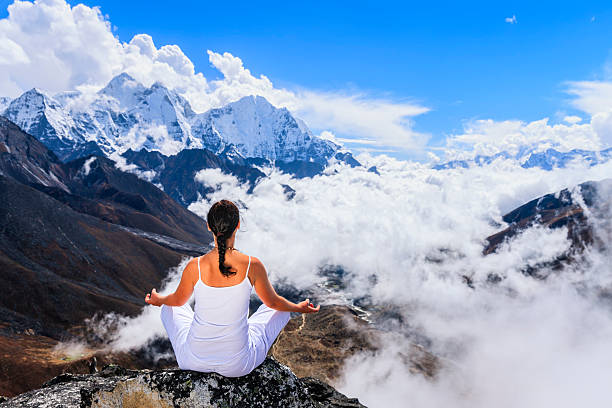
Embark on an adrenaline-pumping mountain flight from Kathmandu airport to behold the breathtaking views of Mount Everest, the world’s highest peak, at the Everest View Hotel. Experience the thrill of landing at Lukla airport, one of the most dangerous airports in the world, before commencing your adventurous trek to the mesmerizing Mount Everest base camp, situated at an altitude of over 17,000 feet above sea level. Opt for an optional heli tour for a majestic aerial view of the entire region, offering an unparalleled perspective of the majestic Himalayas. Engage in exhilarating activities such as helicopter sightseeing, photography sessions, and taking in the awe-inspiring panoramas of the Himalayan range during your EBC helicopter tour.
Exciting Activities During the Tour
Exploring the majestic Himalayas from a unique vantage point while on an Everest helicopter tour is an experience like no other. Witnessing the breathtaking views of Mt. Everest and its surrounding peaks up close from the comfort of a heli tour is an opportunity not to be missed. Additionally, taking off from Kathmandu airport and flying over Lukla airport before reaching the Everest View Hotel provides a perspective that few get to experience. The thrill of soaring above sea level and getting close to the iconic Mount Everest base camp is truly a once-in-a-lifetime adventure.
Furthermore, during the tour, travelers have the chance to partake in a mountain flight, offering an unparalleled view of the Himalayan range. Whether it’s capturing stunning photographs or simply taking in the awe-inspiring beauty, the exhilaration of being on an ebc helicopter tour is unmatched.
Experiences Exclusive to the Helicopter Tour
Awe-inspiring panoramic vistas of the Himalayan range unfold before you as you soar through the sky on a helicopter flight towards the Everest Base Camp. Touching down at the base camp, encircled by the world’s highest peaks, offers a one-of-a-kind experience that is truly unparalleled. The convenience and exclusivity of a helicopter ride to the base camp allow you to optimize your time, ensuring that you make the most of every moment amidst this breathtaking landscape. Flying over the Khumbu region, you’ll be captivated by the mesmerizing views of the Khumbu Glacier and the iconic Khumbu Icefall, adding an exhilarating dimension to your journey. From the unique vantage point of the helicopter tour, you can indulge in the beauty of the surrounding peaks, gokyo lakes, and verdant hills, creating memories that will last a lifetime.
Health and Safety Precautions
To ensure a safe and enjoyable helicopter tour to Everest Base Camp, it’s important to take health and safety precautions. Consult with a healthcare professional beforehand, acclimatize properly, and follow safety guidelines such as wearing appropriate clothing and carrying necessary equipment. Stay hydrated throughout the tour.
Understanding Weight Limitations
Weight limitations for Everest Base Camp helicopter tours can vary among operators. These typically include passenger and luggage weight. Accurate weight disclosure is crucial to ensure safe operations. Operators may offer alternatives or require additional fees if you exceed the limit.
Frequently Asked Questions
Can You Experience the Everest Summit on this Helicopter Tour?
Is it possible to reach the summit of Mount Everest on a helicopter tour? Unfortunately, no. However, you can still witness the breathtaking beauty of the Himalayan mountain range and get up close to Everest Base Camp. The helicopter will even land at Kalapatthar, offering incredible views of Mount Everest and its surrounding peaks. This tour allows you to experience the awe-inspiring grandeur of Everest without tackling the challenging trek to the base camp.
What is a helicopter tour of Everest Base Camp and how does it differ from other tours?
A helicopter tour of Everest Base Camp offers a breathtaking flight above the mountains, providing stunning views of Mount Everest and its surrounding glaciers. This tour is faster than trekking and saves time, offering a unique bird’s-eye perspective that sets it apart from other tours. Although more expensive, it guarantees an unforgettable experience.
What are the benefits of taking a helicopter tour instead of trekking to Everest Base Camp?
Experience the unrivaled beauty of Everest Base Camp without the physical exertion of trekking. Helicopter tours offer a faster and more comfortable way to reach the destination, allowing you to enjoy stunning views of the Himalayas and capture breathtaking aerial photographs. Customize your tour to fit your schedule and preferences.
What are some safety considerations for taking a helicopter tour in the Himalayas?
To ensure a safe helicopter tour in the Himalayas, choose a reputable company with experienced pilots and well-maintained helicopters. Check weather conditions and follow all safety instructions from the pilot. Be aware of altitude sickness risks and acclimatize properly before the tour.
How can I prepare for a helicopter tour of Everest Base Camp?
To prepare for a helicopter tour of Everest Base Camp, wear comfortable and warm clothing, along with sturdy shoes. Don’t forget to bring sunglasses to protect your eyes from the bright sunlight and snow glare. Stay hydrated by drinking plenty of water before and during the tour. Listen attentively to the safety instructions provided by the pilot or guide before takeoff.
What are some key sights and experiences that can be enjoyed during a helicopter tour of Everest Base Camp?
During a helicopter tour of Everest Base Camp, you can enjoy breathtaking views of the Himalayas, including Mount Everest, Khumbu Glacier, and Kala Patthar. Immerse yourself in the Sherpa culture and visit ancient monasteries for a truly enriching experience. This tour allows you to appreciate the beauty without the physical demands of trekking.
How long does a typical helicopter tour of Everest Base Camp last?
A typical helicopter tour of Everest Base Camp usually lasts around 4-5 hours. The duration may vary depending on the tour package and weather conditions. Some tours even include a landing at Kala Patthar, offering breathtaking views of Mount Everest. It’s advisable to book your tour in advance, especially during peak season.
What should I wear or bring with me on a helicopter tour of Everest Base Camp?
When embarking on a helicopter tour of Everest Base Camp, it’s important to be prepared. Dress comfortably in warm clothing as temperatures drop at higher altitudes. Take along sunglasses, sunscreen, and a hat for sun protection. Wear sturdy shoes suitable for rocky terrain. Don’t forget your camera or phone to capture the awe-inspiring views.
Conclusion
In conclusion, a helicopter tour of Everest Base Camp offers a unique and exhilarating experience that allows you to witness the unrivaled beauty of the Himalayas from a whole new perspective. The convenience and efficiency of a helicopter tour make it an excellent choice for those who want to explore Everest Base Camp without the physical demands of trekking. With a detailed understanding of the costs, itinerary, and pre-decision considerations, you can make an informed choice and plan for an unforgettable adventure. From exciting activities to exclusive experiences, there is plenty to indulge in during the tour. So, reserve your spot, prepare for the trip, and get ready to unlock the beauty of Everest Base Camp like never before.
Tags: Everest base camp heli tour, everest base camp trek, Everest helicopter tourToyota Hi-ace rent price for Lumbini Sightseeing
This blog helps to book hiace for Lumbini sightseeing. Provides information about how to book hiace in Nepal?
Visiting Lumbini, the birthplace of Gautam Buddha, can significantly improve the quality of time spent with loved ones, family, and friends. Lumbini is also one of the most popular tourist spots. Lumbini offers pleasant lodging as well as amazing places to visit.
It is highly advised that you rent a Hiace for your trip, since Lumbini is a fantastic location for tours and activities. Hiace rentals can enhance your travel experience by providing a smooth, comfortable, and convenient mode of transportation. Hiace rentals are an excellent choice for your trip to Lumbini.
Price Information
| Hiace Booking Package for Lumbini | Price |
|---|---|
| Kathmandu to Lumbini Toyota Hiace for sightseeing price | NRP.35000/- |
| Tilaurakot Toyota Hiace for sightseeing price | NPR.10000/- |
| One day Lumbini sightseeing Toyota Hiace price | NPR. 8000/- |
Place to Explore in Lumbini
- Maya Devi Temple
- World stupa
- Bodhi Tree
- Myanmar Golden Temple
- Lumbini Museum
- Thai Monastery
Continue reading “Toyota Hi-ace rent price for Lumbini Sightseeing”
Tags: Lumbini sightseeing in Hiace, Toyota Hi-ace rent price for Lumbini SightseeingMardi Himal Trek – How to Trek in 4 Days?
Mardi Himal is a popular peak among tourists and hikers because of its route. It is located at a height of 4,500 meters in Nepal’s Annapurna region, which is well-known for its varied landscape, natural beauty, and mountain views. You may see the breath-taking Machhapuchhre Himal, also known as the “fishtail,” as well as the Annapurna South, I, II, Dhaulagiri, Mardi Himal, and the expansive Annapurna region on this walk.
Mardi Himal Trek is a four-day, three-night hiking adventure. This trek’s journey can be completed in accordance with the number of days required. The four-day, three-night Mardi Himal Trek begins and ends in Pokhara, where hikers will drive from the picturesque city of Pokhara to Khhada. The walk begins at Khadda and passes via an Australian camp, the picturesque villages of Pothana and Pittam Deurali, as well as other charming villages. Trekkers will take a quick break for lunch at Pittama Deurali. Following lunch, the hiking resumes through the hilly region’s dense forest.
The first day of the walk only consists of the fairly difficult forest trekking. You may experience the subtropical forests on this trip, which are home to a wide variety of plants like fir, birch, oak, and rhododendron, among others. The sound of the wind and birds chirping can be heard as you stroll through the stunning Mardi Himal trek . We will arrive at our lodging, or lodge, after our strenuous trekking, where we will spend the night. In the 2600-meter-high forest camp, encircled by wide forests. where hikers will eat dinner and get enough sleep.
Following a hearty and nutritious breakfast, the journey resumes after a restful night. Compared to the first day of the trek, the second day is somewhat more adventurous. Trekkers will pass the forest camp, the rescue camp, and finally the low camp on the second day. From there, they can view the magnificent Machhapuchhre.
The trek reports that the ascent from the forest camp to the low camp (3000m) took two hours. Some people eat lunch at Low Camp after a satisfying stroll, while others go to Badal Dada, which is 2 and half hours away from Low Camp. It’s the rhododendron forest that you’ll see as you pass the low camp. It usually blossoms in March, beginning in late February and continuing through early April.
Following that, you will arrive at Badal Daada, where you will encounter a distinct topography of the hike, with bear-infested mountains and sparse vegetation such as moss and shrubs. The trek will be somewhat challenging, and there will be amazing vistas of the surroundings everywhere. Your level of joy and happiness will vary with each inhalation and stroll. Hiking through the apex of desolate hills surrounded by tiny, bushy plants and the Himalayas will bring you to High Camp, which is 3,550 meters above sea level. Following the thrilling hike, the trail ends for a day at the High Camp.
The trekkers will leave their accommodations early on the third day, at 3:30 am, following a good night’s sleep at high camp. You will be mesmerized by the starry sky and full moon that lead you as you travel to Mardi Himal viewpoint to see the early sunrise. Every year, thousands of tourists and locals alike flock to the Mardi Himal View Point to witness the captivating sunrise, the clouds flying beneath you, and the earliest rays of sunlight falling on the Himalayas, creating a vibrant golden orange hue. You can carry on hiking for an additional 1:30 hours to reach the Mardi Himal Base Camp. You can return to high camp after finishing the Mardi Himal Base Camp Trek, where you may have breakfast and lead your journey ahead to the siding . The low camp divided the way to the siding. You have an alternative route to return to the siding. You will encounter a variety of weather conditions along the route, including fog and cold. We will arrive at our destination siding after a strenuous day of trekking. where a lot of hikers and tourists relax and eat at your lodges.
Following a restful night and breakfast the following day, the trekkers begin their return journey to Pokhara. Following a quick stroll, you come to leave the siding by reserving a private or shared jeep.
Frequently Ask Question
Why to go Mardi Himal Trek?
This short hike encompasses the entire splendor of the natural world, including Mt. Annapurna, Machhapuchhre, Dhaulagiri, Mardi, and other peaks.
How difficult is the trek?
It’s a moderately challenging trek. The walk there takes 4 to 5 days, and it’s at a height of 4,500 meters.
What is the best time for the treks?
Mid-September to mid-December is the ideal period to trek the Mardi Himal.
Can I hire a trekking guide according to my language?
To learn more about the culture and mountains of Nepal, you can hire a guide in your native tongue, such as Spanish, Chinese, English, Hindi, etc.
Are there any age requirements for the trek?
It is advised that you consider your options before embarking on any treks if you have any health issues or problems, such as asthma. Being under 60 years old is preferable if you want to enjoy the walk and not experience any discomfort.
Is there any digital payment available during the treks?
No digital payment option is available, so be sure to bring Nepali rupees to cover the cost of the meal and services.
What should I carry during the treks?
It is essential to have your hiking bag with the items on the following list.
Toiletries and medicine
- Sunscreen
- Face and body moisturizer
- Lip Guard
- Toothpaste and toothbrush
- A lightweight towel
- Portable shampoo
- First aid kit with medicine (for altitude sickness, cold, sprains)
- Wet wipes
Clothing
- Base layer
- Outer layer
- Outermost layer
- A pair of hiking trousers
- A pair of hiking shorts
- Polyester trekking t-shirt
- Waterproof jacket and trousers
- 4 pairs of underwear
- 4 pairs of sports bras for women
Headwear
- Cap
- Wollen hat
Gloves
- Inner gloves
- Outer gloves
Footwear
- Hiking boots
- Trekking boots
- 4 pairs of hiking socks
- 4 pairs of thermal socks
- A pair of slippers or sandals
Daily Itinerary
Day 1: Drive from Pokhara to Khande and trek to the forest camp.
- Pokhara-khande-forest camp(2600)
- 1hrs Drive from Pokhara-khande
- Hiking distance 14.1 km
- Estimated time duration 9 hrs
You will commence our trek by traveling to Khande from the beautiful city of Pokhara. The trail begins at the Khande and ends with a day-long forest camp stay. This trail passes through the picturesque villages of Pittam Deurali and Pothana. This trail mostly goes through forests.
Day 2: Forest camp to High camp
- Forest camp-Rescue camp-Badal Danda-High Camp(2600m-3550m)
- Hiking distance:
- Estimated time: 7hrs
The second day we will eat breakfast at the forest camp and start walking from the forest camp to the high camp. We will stop for lunch at the low camp or else Badal daada. There are captivating vistas of the Machhapuchhre from all around you. Low Camp will take two hours to get there from Forest Camp, and Badal Daada will take an additional two hours. The walk from Badal Daada to High Camp takes three to four hours, depending on your pace. If you hike well, you can finish the trek in a shorter amount of time.
Day 3: High camp –Viewpoint –Siding
- High camp –mardi himal viewpoint –siding (3550-4200-4500m)
- Hiking distance: 29.3km
- Estimated time: 9hrs
You will leave our accommodations at 4:00 am to see the sunrise at Mardi Himal View Point. From there, we will travel to Mardi Himal Base Camp. Once there, we will return to High Camp, eat breakfast, and then continue on our way to Siding, stopping along the way for lunch at Low Camp.
Day 4: siding to Pokhara
- Siding –Pokhara
- Estimated: 25 min of hike then 2hrs of drive
You’ll resume you trek with a quick 20-minute walk after getting a good night’s sleep. then leave in a jeep that you can reserve privately or share.
Tags: Mardi Himal Base Camp Trek, Mardi Himal Trek
Annapurna Base Camp Trek 2024 Complete Guide
Route Update:
Now the vehicle reaches upto Jhinu danda via naya pool, so the trek can be started from there ignoring walking in vehicle road. If the Itinerary goes to Ghandruk, then you can start your trek from Ghandruk directly as you can reach to Ghandruk via vehicle.
Starting Location Update:
Generally trekking agencies starts the trip from Kathmandu. Now if you want to wrap ABC trek in short duration then you can take flight to Pokhara and reach Chhomrong or Ghandruk on same day.
The Annapurna Base Camp journey exemplifies the appeal of the Himalayas, enthralling hikers with its breathtaking scenery and sweeping mountain views. This journey, located in the heart of the Annapurna Sanctuary, provides a rare combination of natural beauty and cultural depth. The route begins at Nayapul and takes travelers past lovely towns, rich rhododendron woods, and terraced farms before climbing gently to the base camp. Trekkers are greeted to breathtaking views of Annapurna, Machapuchare, Hiunchuli, and other snow-capped peaks as they cross the varied terrain. The journey not only shows off the magnificence of the Himalayas, but also introduces visitors to the warm hospitality of the indigenous Gurung and Magar populations who live in picturesque mountain villages along the way.
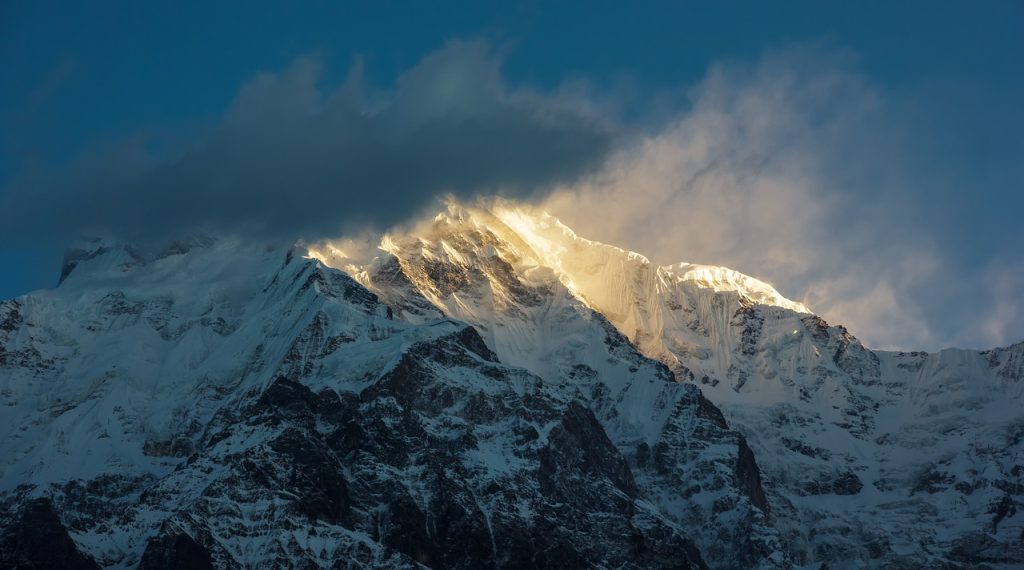
The Annapurna Base Camp Trek normally lasts 7-12 days and is popular not just because of the stunning landscape but also because of the trail’s accessibility. The route is suitable for both novice and expert trekkers, offering a moderate difficulty with plenty of opportunity for acclimatization. The journey offers a transforming experience, allowing travelers to immerse themselves in the raw beauty of the Annapurna region while making friendships with fellow trekkers and the hospitable mountain towns, whether completed in the colorful bloom of spring or the crisp air of autumn.
Best Season To Trek in Annapurna Base Camp
The season you choose has a big impact on your trekking experience at Annapurna Base Camp. Spring (March to May) and fall (September to November) are the best times to embark on this breathtaking tour. The walking routes come alive with vivid rhododendron blossoms throughout the spring season, changing the environment into a kaleidoscope of hues. With temperate temperatures and sunny sky, the weather is usually consistent, affording hikers with amazing vistas of the towering peaks that surround the Annapurna Sanctuary. The routes are also covered with lush foliage, offering a gorgeous scene for tourists passing through the charming towns and terraced farms.
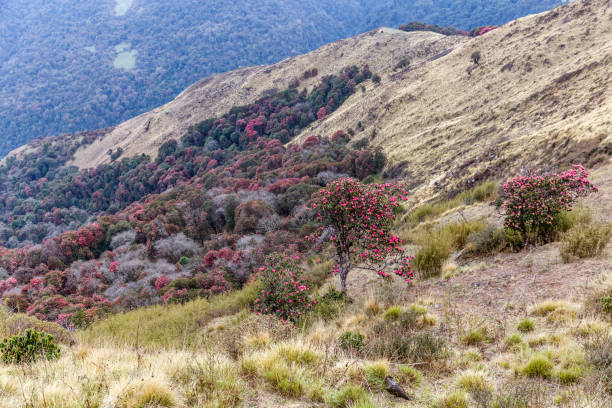
The Annapurna Base Camp trip has sunny sky and a lovely atmosphere in the autumn season. The monsoon rains have stopped, leaving the air crisp and the pathways dry, which improves the whole hiking experience. Autumn visibility is superb, allowing hikers to see the snow-capped peaks, like Annapurna and Machhapuchare, in all their beauty. The mild daytime temperatures and chilly evenings allow for pleasant hiking conditions. Autumn also coincides with local festivals, allowing trekkers to immerse themselves in the region’s cultural celebrations, giving an added depth of richness to the experience. Finally, whether to choose spring or fall is a matter of personal preference, whether one prefers the brilliant hues of spring or the clear, post-monsoon sky of October.
Permits and Regulations
The Annapurna Base Camp walk necessitates the use of special permissions and rules to protect both trekkers’ safety and the preservation of the pristine environment. The Annapurna Conservation Area Permit (ACAP) and the Trekkers’ Information Management System (TIMS) card are required for this journey. The ACAP is intended to aid conservation efforts in the Annapurna area, helping to the long-term management of the fragile ecosystems and unique flora and wildlife found along the trekking paths. The TIMS card, on the other hand, assists in monitoring and ensuring trekkers’ safety by preserving a database of personal information during the route. These permits, which must be obtained in Kathmandu or Pokhara, are required for admission into the Annapurna Conservation Area.
Accommodations and Tea House
The Annapurna Base Camp trek’s accommodations are generally supplied by quaint tea houses that dot the path, giving a unique and immersive experience for trekkers. These teahouses, which are small but cozy lodges, serve as havens for fatigued hikers, providing a place to relax, recharge, and interact with other travelers. Every teahouse has minimal facilities including mattresses with blankets, public dining spaces, and shared restrooms. While the luxury of the facilities varies, the gracious hospitality of the local hosts lends a special flavor to the whole trekking experience.
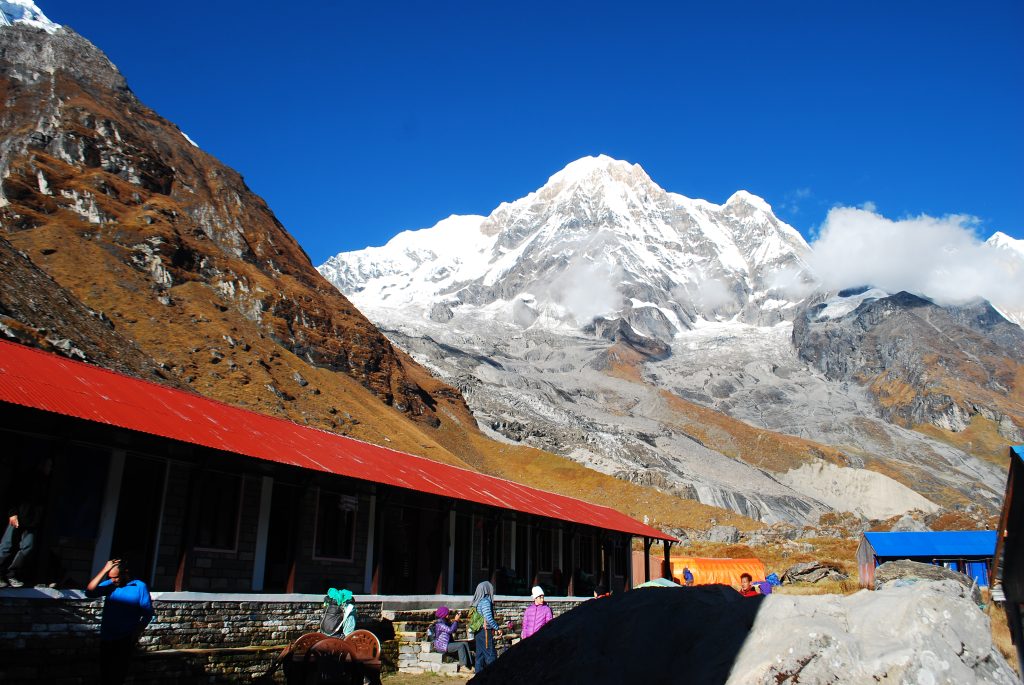
Tea houses along the Annapurna Base Camp path also serve as social hubs where trekkers from all over the globe may share tales, trade tips, and make new connections. The warm atmosphere and companionship contribute to the trek’s sense of community. Tea house meals are often cooked using local ingredients, providing a taste of Nepali cuisine. Trekkers may enjoy traditional meals while taking in the spectacular alpine scenery. The tea house experience is an essential component of the Annapurna Base Camp hike, offering not only a place to relax but also a chance to immerse oneself in the rich culture of Himalayan communities.
Fitness Level Required
The Annapurna Base Camp journey requires a good degree of physical fitness to negotiate the varied terrain and elevations. While the trip is classified moderate, it includes regular ascents and descents that test hikers’ cardiovascular and physical stamina. Regular aerobic workouts, such as hiking, cycling, or jogging, might improve stamina and respiratory fitness. Incorporating strength training exercises that focus on leg muscles and core stability also helps to the overall physical readiness necessary for the walk.
The highest point of the Annapurna Base Camp walk is over 4,000 meters (13,000 feet), therefore altitude is an important concern. Acclimatization is essential for reducing the risk of altitude sickness. Before beginning on the Annapurna expedition, trekkers should participate in altitude-specific training or conduct shorter climbs at higher elevations. Building a fitness regimen several weeks before the trip and progressively increasing the intensity helps guarantee that participants are physically prepared for the Himalayan terrain’s obstacles. Overall, a mix of aerobic fitness, strength training, and altitude-specific preparation lays the groundwork for a more fun and successful Annapurna Base Camp journey.
Itinerary options
The classic ABC trek takes 10-12 days, but shorter (6-8 days) and longer (14-15 days) options are available. Here’s a breakdown of a popular 10-day itinerary:
Day 1-2: Pokhara – Nayapul – Chhomrong
Start your journey in Pokhara, a vibrant lakeside city nestled amidst mountains. Take a bus or taxi to Nayapul and begin the trek uphill to Chhomrong, a traditional Gurung village with stunning views.
Day 3-4: Chhomrong – Dovan – Machapuchare Base Camp
Descend into the Modi Khola valley, crossing numerous suspension bridges and walking through vibrant rhododendron forests. Reach Dovan for breathtaking mountain panoramas and continue to Machapuchare Base Camp for a closer look at the iconic Fishtail Peak.
Day 5-6: Machapuchare Base Camp – Annapurna Base Camp
Ascend through alpine meadows and yak pastures, enjoying the fresh mountain air and dramatic scenery. Finally, reach Annapurna Base Camp (4,130m) and witness the awe-inspiring sunrise over the Annapurna massif, a truly unforgettable experience.
Day 7-8: Annapurna Base Camp – Bamboo – Sinuwa
Retrace your steps to Bamboo and Sinuwa, soaking in the changing landscapes from a different perspective. This section offers the chance to relax and reflect on your trek so far.
Day 9-10: Sinuwa – Jhinu Danda – Pokhara
Descend through diverse landscapes, passing quaint villages and charming waterfalls. Relax at the natural hot springs in Jhinu Danda before returning to Pokhara, marking the end of your incredible trek. Except these you have lots of different itineraries options as well like:
- Annapurna Base Camp 7 Days
- Short Annapurna Base Camp Trek
- Annapurna Base Camp Trek By Helicopter
- Annapurna With Tilicho Lake Trek
Packing Essentials Required
The appropriate clothing and equipment may make a major difference in the harsh Himalayan climate, so packing carefully is crucial for a successful and pleasant Annapurna Base Camp hike. Trekking boots are an absolute must for providing ankle support and traction over rough terrain. To minimize blisters and discomfort, these boots must be broken in before the walk. Given the trail’s changing temps, weather-appropriate attire is essential. Moisture-wicking base layers, insulating mid-layers, and a waterproof and windproof upper layer are essential. A decent quality four-season sleeping bag is also advised, as temperatures can drop dramatically at higher elevations. While teahouses supply blankets, bringing a heated sleeping bag guarantees a good night’s sleep.
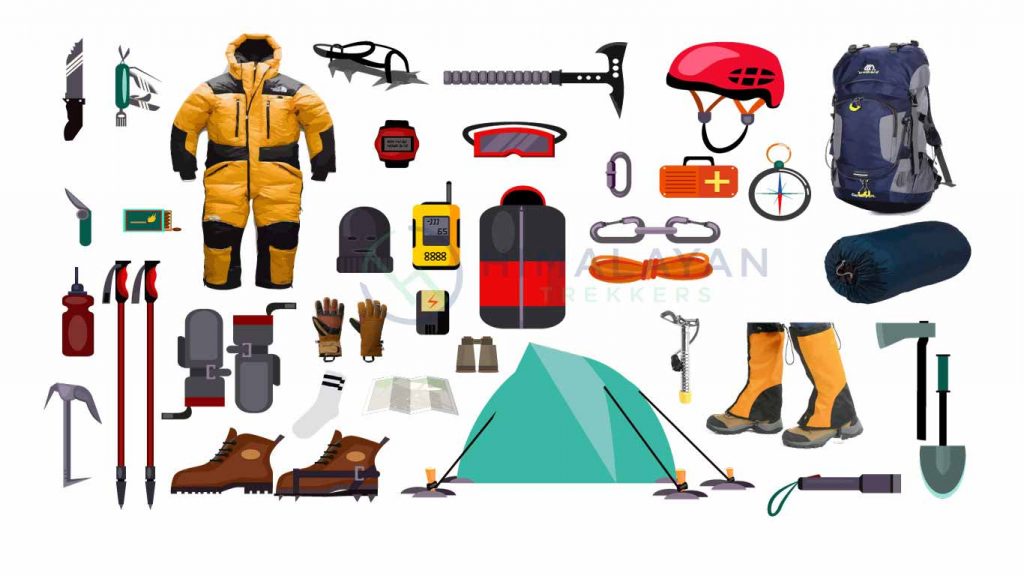
During the walk, a well-equipped backpack is important for transporting personal things and everyday necessities. It should be roomy, light, and have comfortable straps for proper weight distribution. Trekking poles for stability on steep descents and ascents, a water filtration device for clean drinking water, and a thorough first aid pack are also essential. Sun protection, such as sunglasses, sunscreen, and a wide-brimmed hat, is also essential owing to the harsh mountain sun. With limited access to charging stations along the way, trekkers should bring additional camera batteries and a portable power bank to record and share the spectacular moments of their Annapurna Base Camp experience. Trekkers are well-prepared for the difficult terrain if these packing necessities are carefully considered.
Additional Tips
Acclimatize properly: Spend a few days in Pokhara before starting the trek to avoid altitude sickness.
Drink plenty of water: Stay hydrated to combat altitude and exertion.
Respect the environment by removing all waste and leaving no trace on the mountain. Reduce your use of plastic and replace it with biodegradable alternatives. Instead of putting it out in the open, properly dispose of toilet paper in designated pits. Be a responsible trekker and help preserve the Himalayas’ unspoiled beauty.
Hire a trustworthy tour guide: Select a licensed guide who is familiar with the local culture and surroundings. A guide can help you traverse the trails, deal with permissions and logistics, and provide information about the region’s history and traditions. Their local knowledge and skills can enhance your trekking experience greatly.
Accept the challenge: With severe hills and altitude increase, the walk will be physically taxing. The benefits, on the other hand, are infinite. The accomplishment of reaching Annapurna Base
Conclusion
The Annapurna Base Camp trip is a soul-stirring journey that mixes the exhilaration of hiking with the tranquillity of the Himalayan scenery. By following this detailed guide, you’ll be well-prepared to go on this once-in-a-lifetime adventure, making memories that will last long after you’ve descended from the beautiful heights of the Annapurna region.
Tags: abctrek, annapurna, annapurnabasecamptrek
Short Everest Base camp Trek – A Complete Guide with Itinerary
Short Ebc (Everest base camp) trek is the most incredible experience that takes you through the base camp of Everest in less than 12 days, with luxurious comfort and style. When you walk through the trekking it will provide you natural pleasure, Buddhist priory, & high altitude flora and fauna. While on returning Heli flights back to Kathmandu, trekker’s get to explore spellbinding scenarios of the Sagarmatha and the other peaks in the span of enjoyment of the trek through the fascinating Sherpa hamlets & experiencing spectacular aerial view of the Everest region. Short Ebc trek is the most thrilling & adventurous trek.
There’s no fear during the short Everest base camp trek with us. You’ll completely feel safe & comfortable because of the loving, caring, respectful, and kindful nature of the people during this trek. People are really very friendly and welcoming. So it is completely safe for the women whether you are trekking alone or you’re trekking with the team. Yes you’ll get the attention of the local people because you are a foreigner & your gender but still there is nothing to worry about, it is completely safe to travel or trek.
Guide is the backbone of the trekking world. Guide helps you throughout every step of the trek, because they have good knowledge about the geography regarding the trek & high altitude. Yes, you can hire a guide from Kathmandu. You also can also hire a guide from Kathmandu and also from the Lukla. It’s totally up to you. Hiring a guide from Kathmandu will make you feel more comfortable and you’ll enjoy the company of the guide from Kathmandu. If speaking English is your problem then you can also guide according to your mother tongue. We have German, French, Spanish, Chinese speaking guides as well.
There will be no communication barrier between you and the guide because there will be the best guide with good communication skills.
What type of cuisine is available during the short Ebc trek?
In the tea house, traditional Nepalese cuisine is served, with lots of noodles & rice. Nevertheless, most of the tea houses also offer a range on their menus, such as pizza, lasagna, burger, chips, apple pie and even a buff curry with rice. Hot and cold drinks including beer are also served according to your order but it may not be good when you’re in high altitude. It is also better to eat something hot and light. If you overeat you will have problems while walking with a heavy stomach. From starters, main course and dessert you will get everything in the food menu. You’ll get continental breakfast up to $2 to $7 and Nepali cuisine food up to $10 to $12.
How much weight is carried by the porter in the short Ebc trek?
During the short Ebc trek, one porter will help 2 clients. We prosecute the weight limits of the maximum 20kg/44lbs to 25kg per porter. So, we suggest you carry only essential trekking equipment & it should be 15kg/33lbs, not more than that. Also, the domestic flights in Nepal only grant 15kg/33lbs by putting both luggage & backpack together. And you can store the remaining luggage in the hotel of Kathmandu which will be managed by your agent.
Pinpoints of short Everest base camp trek.
- Mesmerizing sun setting over Everest from Kala Pattar, this is basically known as Everest view point
- Peaceful environment, with the fabulous scenery of the mountain covered with snow
- Climate & temperature are cold in this place.
- Tibetan snowcock, musk deer, red panda, mountain yak, & golden
Which season is suitable for short Ebc trekking?
Everest Base camp trek can be performed through out the year. But rainy season is not suggested. Spring and Autumn are best time to trek.
Spring season (early March to late July)
During this period, the temperature and climate begins warmer. You’ll see greenery all over the hills. Flowers tend to blossom and everything seems even more beautiful and better. The day will be longer and warmer in the march & it will be still cold in the morning & at nights. You’ll get a chance to see rhododendron (Nepal’s national flower) blossoming all over the hills. Since it is the perfect time for trekking it can be quite busy & you’ll experience many visitors in the himalayan region.
Autumn season (September to early November)
This is the season where the day will be warm & clean, the temperature falls off slightly cold. It will be an incredible journey when you trek in this season. There will be no risk of snowfall, rainfall and there will be no leeches as well. In this season, mountains will be more noticeable.
Climate and temperature
| no. | Seasons | Day time | Night time |
| 1. | Winter | -18⁰c to 16⁰c | -5⁰c to 12⁰c |
| 2. | Summer | -10⁰c to 8⁰c | 07⁰c to 15⁰c |
| 3 | Spring | 2⁰c to 16⁰c | -12⁰c to 02⁰c |
| 3. | Autumn | -12⁰c to 16⁰c | 02⁰c to 5⁰c |
Detail itinerary
Day 01: Arrivals in Kathmandu, welcome dinner. O/n at hotel/ trek preparation
Welcome to Nepal. Our representative will pick up from the Tribhuvan international airport. And then at the hotel, freshen up & take some rest. In the evening, enjoy a welcome dinner organized by Adventure Vision Treks.
Day 02: Fly to Lukla (2800m) & trek to Phakding (2650m)
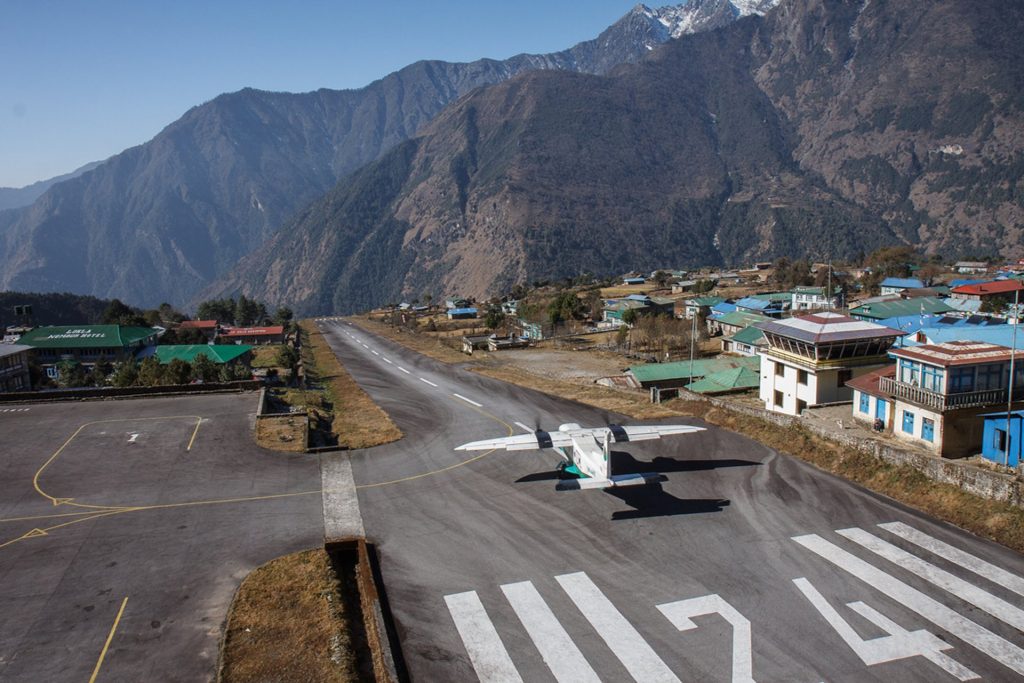
Early in the morning drive to Manthali (4 hours) takes Manthali to Lukla flight. A day starts with an early morning flight with a drive to Tribhuvan international airport in Kathmandu. We will catch a short Tran- himalayan flight to Tenzing Hillary airport at Lukla (2804m). At Lukla, our trekking guide will brief you & introduce you to the porter before starting the trek towards Phakding (2,610m).
We walk on a trail that slowly drops down to Chepling village from where we get the glimpse of the mountain Khumbila, a sacred mountain that has been climbed. And then we descend further down until Phakding.
Day 03: trek to Namche (3440m)
On the third day we continue trekking along the banks of the river called Dudh Koshi & cross the river several times through suspension bridges loaned with prayer flags. We cross Chumao & Monjo villages before reaching the entrance points of Sagarmatha national park. Then after, we cross suspension, bridge & we will walk across Jorsale village and walk alongside the Dudh Koshi & Bhote Koshi. A steep climb through the forested trail leads us towards the Namche Bazaar.
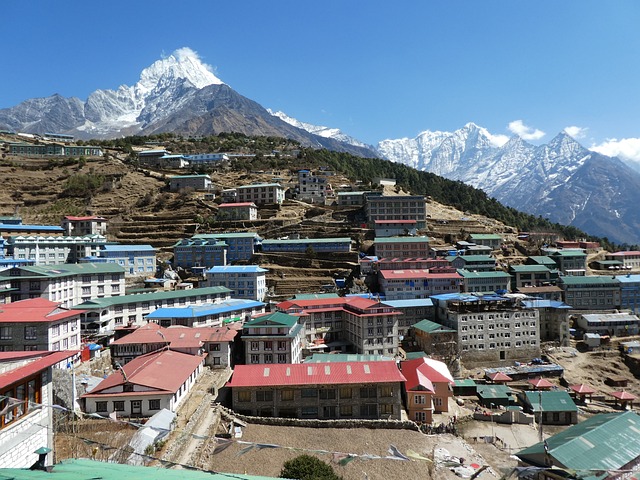
Day 04: Acclimation rest day
This will be the first scheduled acclimatization day on our treks. Mountain experts will suggest you to stay active throughout the day; we climb high and sleep low. We spend our day in Namche Bazaar in order to acclimatize & adjust our body in this atmosphere.
After having breakfast, we hike to Syangboche Airstrip that is wonderfully located on a hill above the town. From here, we get to witness the striking view of Namche & tempting Himalayan ranges as well. Further, we hike to the Everest view hotel. It is the highest located hotel in the world & served the best view of Everest and other peaks right in front of the table. We trek back to Namche, visit Everest photo gallery & the Sherpa cultural museum.
Day 05: trek to Thyangboche
After having breakfast, we take an easy trail from Namche which leads us to the wide valley called Dudh Koshi valley at the village of Phungki Tharka. Here we get the great views of Mountain Everest. We then walk along the right side of the river called Dudh Koshi River until Tengboche. The trail from Namche to Tengboche offers the impressive beauty of nature. Trekker gets to see mesmerizing view of the rivers, hills & peaks.
Tengboche village is nestled at the juncture of the Dudh Koshi and the Imja khola (river). It is surrounded by incredible hills covered with the stunning flower rhododendron forest. The village houses Tengboche monastery, the largest monastery in the Khumbu region.
Day 06: trek to Dingboche
Today we will cross the Imja River via a suspension bridge & walk towards the beautiful village of the dingboche. We drop off & walk throughout the rich forest of birch, conifer and rhododendron treks. On the way, we get the stunning views of Mt.Everest, Mt.Lhotse & Ama Dablam. We will walk along Lobuche River & Imja valley before making the ascent to dingboche.
Day 07: Rest day at Dingboche (4360m)
We will spend a day in dingboche which helps our body to acclimatize at higher altitude. Today we climbed on a ridge located behind the village & witnessed the amazing views of 8 thou sanders including Lhotse, Makalu & Cho Oyu. In addition, we also get to admire the cholaste & taboche peaks. And to the north-east, we can see the peaks standing above the Khumbu khola valley. We will also see the picture of dingboche village & wide Imja khola valley from another point of the ridge.
Day 08: Trek to Lobuche (4930m)
After having breakfast, we’ll continue our trek to Lobuche via Dhunga. We’ll walk across the trekkers Aid post located at Pheride (4210m). The post is operated by the western volunteer doctors & assisted by the himalayan rescue association. We also walk across Chupki Lhara, a rock- strewn slanting from where attractive mountain vistas can be seen here. The chain follows the Khumbu glacier hill with exceptional views of the mountain peaks like Khumbutse, the mahalangur Himal, Lingtren & the pumori. Mount Nupste looms up ahead once the glacier pass is crossed. And overnight in Lobuche.
Day 09: Trek to gorak shep (5288m) excursion to Everest Base Camp (5545m)
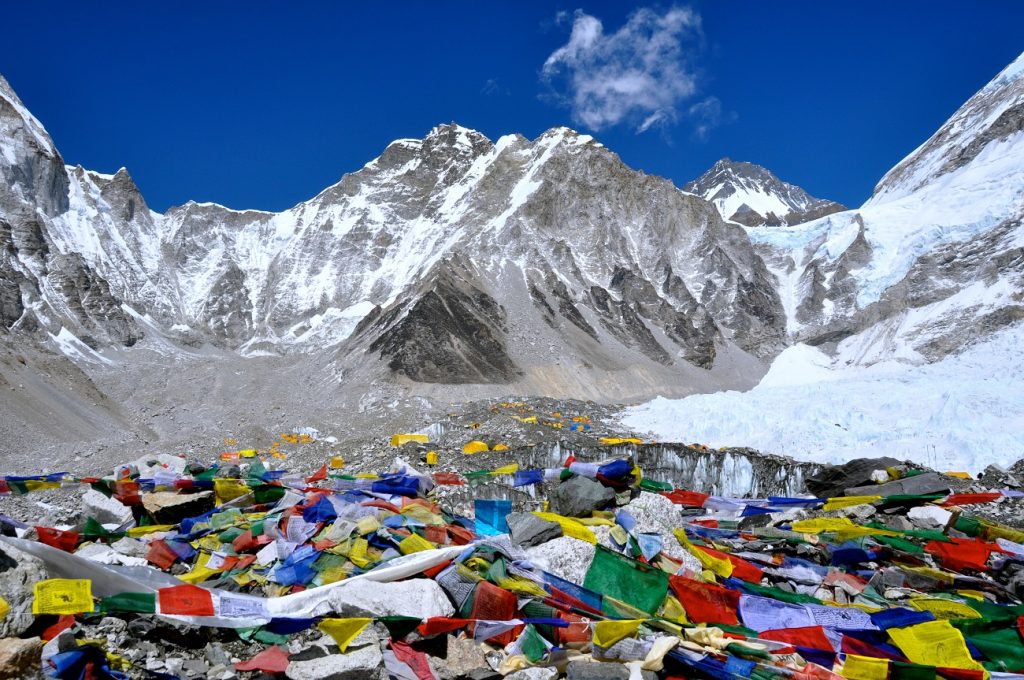 The chain to Everest base camp is not so difficult. Nevertheless, we have ascended & descended quite often on a glacier footpath. We also walk on rough land. As we reach the base camp, we admire the amazing melt patterns and enjoy the round view of ice giants on the upper reaches of Khumbu glaciers. Mt. Everest Base Camp serves the outstanding views of Nupste, Khumbutse, & Pumori mountains. After exploration, we retrace our steps back to gorak shep to stay overnight.
The chain to Everest base camp is not so difficult. Nevertheless, we have ascended & descended quite often on a glacier footpath. We also walk on rough land. As we reach the base camp, we admire the amazing melt patterns and enjoy the round view of ice giants on the upper reaches of Khumbu glaciers. Mt. Everest Base Camp serves the outstanding views of Nupste, Khumbutse, & Pumori mountains. After exploration, we retrace our steps back to gorak shep to stay overnight.
Day 10: Climb Kalapattar- Gorak Shep & Kathmandu by Helicopter.
It is another significant day of the trek. Today we will be hiking early in the morning to witness mesmerizing sunrise views from Kala patthar (5545m). It is the most famous viewpoint in Nepal. After that, we trek back to Gorak Shep. After having breakfast, we will enjoy a comfy helicopter ride to return back to Kathmandu. You’ll also experience spellbinding aerial views of the wonderful topography as well as the huge himalayan range. Overnight in Kathmandu.
Day 11: Trip ends
At the assigned time we’ll drop you to the airport. Our team is delighted to serve you any means. Your journey in Nepal comes to an end today. Our airport representative will transfer you to the Tribhuvan international Airport for your final departure. Goodbye & May we meet again & we are glad to be part of your journey.
Tags: Everest, everest base camp trek, short everest base trek10 Things To Know Before Going To Mardi Himal Trek
The Mardi Himal Trek, situated in the Annapurna region of Nepal at an altitude of (4500m), is renowned for its exceptional natural beauty and majestic mountainous landscapes. This trek offers breathtaking views of the imposing Annapurna South and the towering Machhapuchhre Himal. This expedition offers the opportunity to discover a wide range of Natural diversity, including diverse biodiversity, Mountainous landscapes, and varied terrains, all within a single journey. The Mardi Himal trek offers a unique and valuable experience that is worth undertaking at least once in a lifetime. It is important to be well-informed about the trek before embarking on it. Therefore, Here are Ten essential considerations to be aware of before undertaking the Mardi Himal trek.
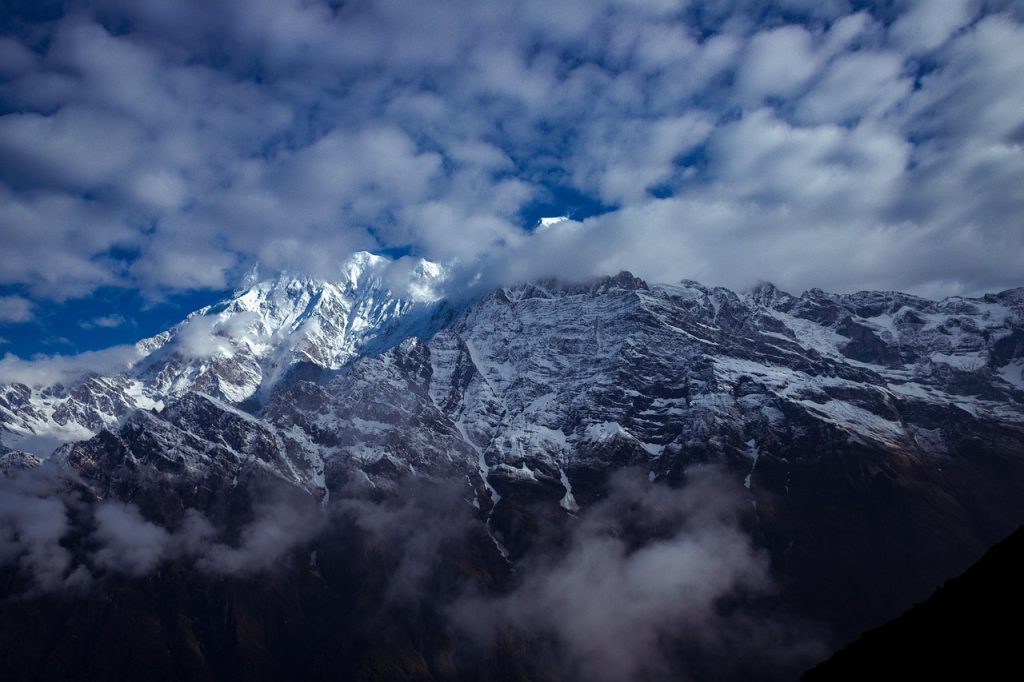
Mardi Himal Trek Route Map
The Mardi Himal trek is a multi-day hiking expedition that typically spans 4-5 days. It is essential for trekkers to seek proper guidance in order to navigate the route effectively and reach their intended destinations. Venturing alone may lead to various challenges, whereas enlisting the services of a guide can offer assurance and assistance, including provisions for resting during the journey. Alternatively, trekkers opting for independent travel should familiarize themselves with the Mardi Himal trek route map to ensure a safe and informed journey. The Mardi Himal trek is a relatively short trek that presents a moderate level of difficulty. The trek culminates at the Mardi Himal viewpoint, situated at an altitude of 4200 meters. For those seeking to reach the Mardi Himal basecamp at an elevation of 4500 meters, the trek poses additional challenges for hikers.
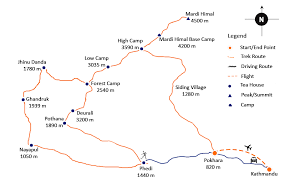
Image Credit: https://www.nepaltrekkinginhimalaya.com/pages/mardi-himal-trekking-route-from-pokhara
Essential Material You Should Carry During The Trek
It is recommended to wear comfortable clothing composed of polyester, nylon, or merino wool base layers, as these materials effectively wick moisture away from the skin and facilitate faster drying. Additionally, it is advisable to carry and wear trekking pants or joggers for enhanced comfort. For individuals embarking on their first trekking experience, it is beneficial to bring a trekking stick for added support.to dress in comfortable attire and footwear to facilitate ease of movement and to bear the weight of a trekking bag, typically weighing between 4-5 kilograms . Additionally, it is essential to bring a power bank due to the absence of electricity and network connectivity. The hotel utilizes solar energy for lighting and mobile phone charging. Furthermore, it is recommended to pack warm clothing, as the high camp and nighttime temperatures during the trek are expected to be cold. For more detailed packing list you may refer to: https://himalayan-masters.com/travel-guides/packing-list-for-mardi-himal-base-camp-trek/

Ensure Adequate Hydration
In order to sustain energy and alleviate fatigue, hikers should ensure adequate hydration by consuming sufficient water to maintain proper fluid balance during treks. It is advisable to also bring warm water in a thermos when embarking on early morning excursions to viewpoints, as this can help prevent cold exposure and mitigate the risk of altitude sickness.
Ensure That Your Mobile Device Is Kept At A Warm Temperature
Prolonged exposure to low temperatures can lead to a reduction in the performance of your mobile phone’s battery. It is advisable to shield your phone from the cold by placing it under a blanket or pillow during the night. Additionally, when venturing out to capture the scenic sunrise at a vantage point, it is recommended to insulate the phone with warm clothing to preserve battery life while capturing stunning images of Mardi Himal, the imposing Annapurna, and the majestic Machhapuchhre.
Do Not Overlook The Opportunity To Witness The Sunrise
It is imperative to rise early at 3:00 and depart from the hotel at 3:30 in order to witness the sunrise. The journey from high camp to the viewpoint may present moderate difficulty, as it spans a distance of 3500m to 4200m and typically takes 2 to 3 hours to traverse. By 6:30, from the viewpoint, one can behold the captivating sunrise, surrounded by the majestic peaks of Machhapuchhare, Annapurna I and II, Mardi Himal, Nilgiri, Himchuli, Dhaulagiri, and others.
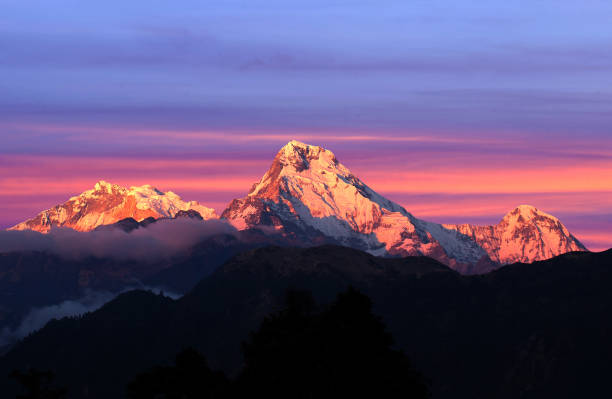
Food And Beverage During The Treks
The Mardi Himal trek is a brief excursion that offers participants the opportunity to immerse themselves in the local culture and gain insight into the tourism industry in Nepal. The trip also includes the experience of typical Nepali cuisine, such as the Nepali thali, comprising rice, dal, pickles (including those made from tomatoes and gundruk sadeko), curry, green leafy vegetables, and salad. While predominantly vegetarian fare is prevalent in most locations, non-vegetarian options are also available based on individual preferences.
For brunch, noodle dishes and thupa (Tibetan noodle with vegetable or chicken stew, or a combination of both) are commonly served with locally made pickles. In the mornings, breakfast typically consists of Gurung bread, boiled eggs, and vegetables like potatoes cooked with pulses such as chickpeas, horse gram, and peas, accompanied by tea and coffee.
It Is Advisable To Refrain From The Consumption Of Alcohol And Tobacco
It is advisable to abstain from the consumption of alcohol and tobacco in order to fully appreciate the journey and achieve relief from stress and suffering. Consumption of these substances may result in various adverse effects such as vomiting, dizziness, fatigue, and anxiety. While rescue camps are available along the Mardi Himal trek, they may be delayed in emergency situations. Therefore, to avoid unnecessary complications, trekkers are encouraged to refrain from consuming alcohol and tobacco.
Refrain From Exesscive Consumption Of Food
The Mardi Himal trek typically requires a minimum of 4-5 days, with daily walking durations of 4 to 5 hours. Overindulging during lunch may result in walking difficulties, fatigue, and drowsiness. It is advisable to increase water intake and refrain from overeating. Emphasizing the consumption of nutritious meals and minimizing the intake of unhealthy food is recommended. Additionally, carrying energy bars can help regulate blood sugar levels.
Hotel and Accommodation
It is recommended to secure hotel accommodations in advance. If you are planning to embark on a trek through a travel agency such as Adventure Vision Trek and Travel (http://www.adventurevisiontreks.com), the company will arrange reservations based on your preferences and comfort. Alternatively, if you are making arrangements independently, it is advisable to make advance bookings, particularly during peak tourist seasons when there is a high influx of visitors, both domestic and international. This surge in demand may result in a shortage of available rooms, potentially necessitating alternative sleeping arrangements, such as in dining areas. Additionally, it is advisable to engage the services of a local guide who is familiar.
Best Time For Mardi Himal Trek
The Mardi Himal trek is renowned for its breathtaking natural landscapes, including expansive blue skies, captivating cloud formations, and mesmerizing views of the surrounding Himalayan mountains. The optimal time to experience these natural wonders is from mid-September to mid-December.
For those interested in embarking on the Mardi Himal trek, Adventure Vision Trek and Travel can be contacted for further information at https://www.adventurevisiontreks.com or via email at info@adventurevisiontreks.com or adventurevisiontreks@gmail.com.
Tags: Mardi Himal Base Camp Trek, Mardi Himal Trek


